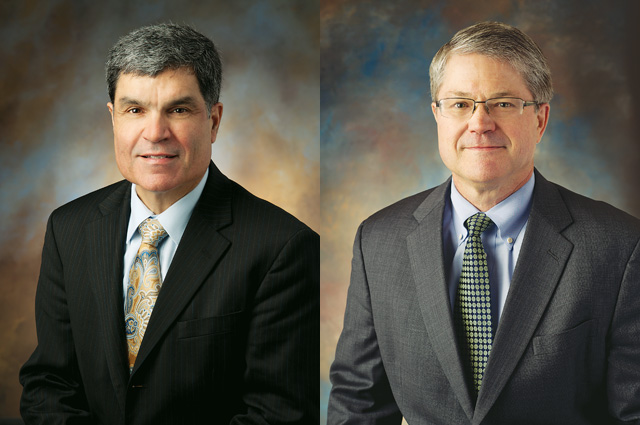Pratt & Whitney commercial engines president Todd Kallman and Bob Saia, vice-president, commercial development programs, discuss the US company's presence at the show, its renaissance in the single-aisle commercial airliner market and the challenges that lie ahead
There seems to be a word association in popular culture these days with the words "European market" and "uncertainty", so how is that affecting your business and what are your expectations for the Paris air show?
Kallman: I think there's two elements to your question, though. The macro-backdrop you're talking about for me really impacts what you see in our ongoing aftermarket as the airlines try to reduce their costs in these uncertain times.
We've discussed that stuff in our earnings call. I think from a new campaign standpoint, we're not seeing any slowdown in the new aircraft campaigns out there. I think the fact that people are looking at the need to reduce cost, looking at the maintenance costs and their costs of fuel, these new-generation aircraft and new-generation engines are a significant benefit for them and they all want to try to capitalise on them as soon as possible.
 |
|---|
| Pratt & Whitney Bob Saia (left) & Todd Kallman (right) |
How are the six concurrent development programmes with different variants of the PurePower engine core going?
Kallman: I'll let Bob go into more specifics, but, at the global level, across the family we've got about 13,700 cycles and 4,800h of testing across the entire family. And 460h of those are in flight. We're very, very pleased with the kind of data we're getting out of these programmes, and we're just really pleased here. To look at these development programmes and to have as much success as we're having is incredible.
Saia: The timing of these programmes really worked out well because we've got CSeries certificated. We've actually delivered now the first fixed powerplants. That engine is really now in a flight test phase so the engine development portion, even though we're still working on fine-tuning development components for production, is essentially done. The MRJ programme is about halfway through, so it's now getting ready to start [certification] testing and the [A320]neo is maybe 20-25% of the way through - the first four engines are at test.
So the staggering of these programmes really works well because we take the CSeries team that have a lot of unique designers, bring them onto the MRJ or neo programme, they're really skilled and ready to take on the programme. Embraer, we're anxiously awaiting programme launch. They're targeting 2018. So again, from a sequencing and timing perspective, they really do sit well.
On the widebody side, there were some developments in the first quarter. Pratt & Whitney's last play in the widebody market of course was with the joint venture with [General Electric] on the A380. Now Boeing has selected GE as sole source on the 777. Airbus has selected Rolls-Royce as sort of a de facto sole source on the A350 - at least for one of the variants. Pratt & Whitney has been very clear that it will keep working back into this sector, but what opportunities do you see on the horizon for another widebody engine competition?
Kallman: I think the answer to your question is that what we're focused on first of all is being successful on our narrowbody programmes that we have today. Being successful there will give us the opportunity to branch out and be successful in the large aircraft or the widebody again. But, to be ready for that, you have to evolve and develop your technologies and make sure you scale them up to do the higher thrust class, which we believe we can do.
You just never know what's going to happen out there in the marketplace because a few years back, we didn't think there was going to be a neo programme, and we've already sold a lot of aircraft and us having like five programmes out where we've got over 3,500 engines confirmed and optioned out there. It's a long-term game, so what we're doing is developing the technology so we have that opportunity when it comes our way.
And of course the services part of your portfolio has been a concern in the market for the past year or two. What are you seeing there right now, and what are the conditions you're looking for to see that start turning around?
Kallman: We have seen some stress in the aftermarket on some of our older programmes - PW2000 and PW4000. However, the fact that we bought the Rolls-Royce share of IAE has been a real benefit to us, and we're seeing a lot of improvement there, and in their aftermarket.
We're seeing some of the shop visits come in since we've bought that share. And so it's really two different worlds. But at some point you see a level of recovering coming in the legacy programmes. Right now, there's just a lot of economic uncertainty, as you pointed out.
Which air show - will it be Dubai in November or Farnborough next July - that we'll see the debut appearance of a PurePower engine in flight?
Kallman: You going to pay for it?
Not me!
Kallman: Well, we haven't gotten that far ahead yet. We're going to be focused on Paris right now.
Source: Flight Daily News
















